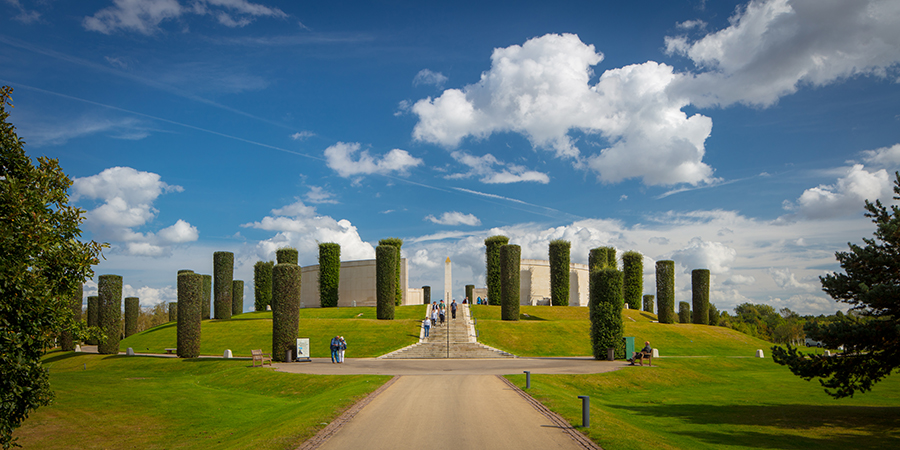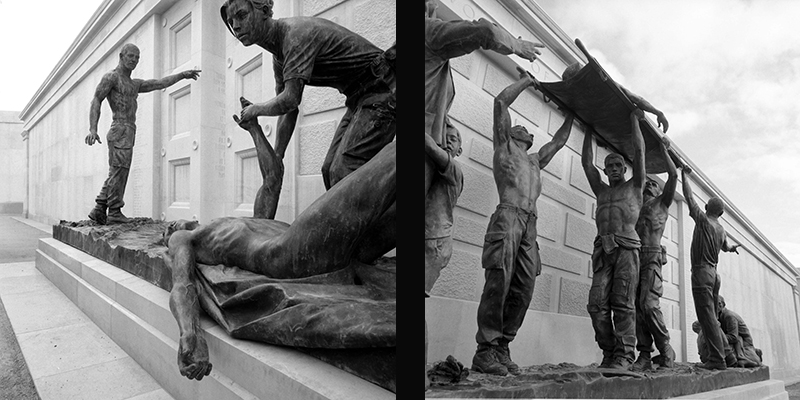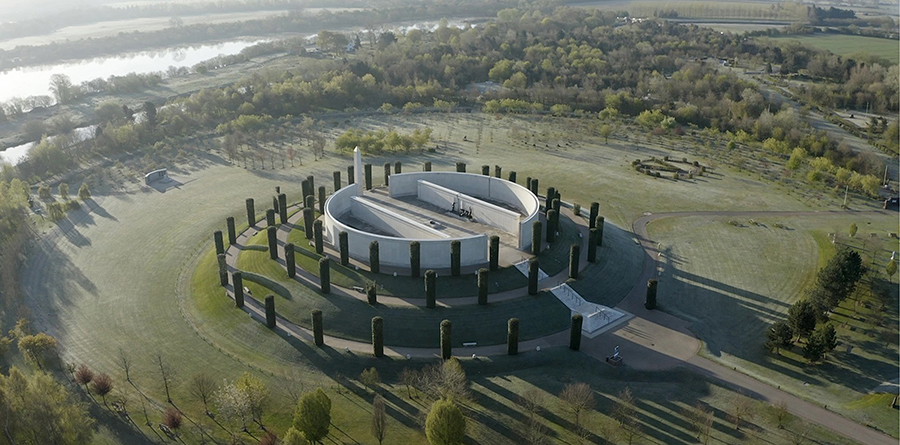2024 Hering Award
In 2024, the National Sculpture Society (NSS) will award the Henry Hering Art and Architecture Award to the Armed Forces Memorial in Litchfield, England. The Hering Award is presented as the occasion warrants for outstanding collaboration among architect, owner, and sculptor in the distinguished use of sculpture in an architectural project.
The recipients of the medals will be
- Ian Rank-Broadley (sculptor)
- Richard Kindersley (stone carver and inscription artist)
- The Armed Forces Memorial Trust (owner)
- Liam O’Connor, Liam O’Connor Architects and Planning Consultants (architect)
Liam O’Connor and Richard Kindersley will become three-time recipients of the Award; in 2022, they received it for their work on the British Normandy Memorial in Normandy, France and in 2023 for their work on the RAF Bomber Command Memorial in London, England.

NSS Fellows Amy Kann and Alicia N. Ponzio, along with Jesse Forrester, RLA of Forrester Landscape Studio and P. Justin Detwiler, Senior Project Designer at John Milner Architects, Inc reviewed the submissions for the Hering Award. Detwiler explains that the memorial shows “sculpting the land, sculpting the building, sculpting the plant material, sculpting in bronze. It’s multi-layered. It’s architectural sculpting, it’s art sculpting, it’s landscape sculpting. That is an incredible connection that almost never happens. There’s no detail left unconsidered. Every bit of this is the highest level.”
The Armed Forces Memorial is comprised of a larger earth mound in the form of a barrow or tumulus which is reminiscent of ancient tumuli found all over the world that date back to the Neolithic period. A four metre-wide gravel path spirals gently up the mound providing a pilgrimage route to the summit. At the top stands a forty-three metre diameter stone structure with curved five-metre-high walls faced with Portland stone and carved with the names of individuals who lost their lives on active service since the Second World War. Forrester says, “the project really draws from traditions that are ancient in this part of the world. They’re trying to build something that will still be meaningful hundreds of years from now. They’ve used a lot of restraint in the design. While it’s vast and there is a lot of ambition to it, it’s also not overwrought. There is a balance to it.”
Fifteen free-standing bronze sculptures, depicting aspects of death, loss and immortality stand at the heart of the project. The sculptures are by Ian Rank-Broadley, known for his effigy of H.M. Queen Elizabeth II on UK coinage. Kann feels that the work is “beautifully and delicately modeled and yet still has a contemporary feel which is so unusual to see. Rank-Broadley chose the exact amount of detail to allow the emotional message of the work to dominate. I admire the sculptor’s incredible skill and his ability to express emotion in clay.” Ponzio, when describing the sculptures, says that “the scale and the restraint in the poses make them feel of our time although they are informed by classical principles.” She adds, “The project creates a personal space for people to shut out the outside world for a moment and really focus on the sacrifices that were made. It considers the human experience as well as the environment around it.”

In 1893, leading sculptors and architects such as Daniel Chester French, Augustus St. Gaudens, and Stanford White founded the National Sculpture Society in New York City. The Society first presented the Hering Award in 1960. This, the twenty-eighth presentation, will take place at the Society’s Honors and Awards Dinner in September 2024, during the Sculpture Celebration Weekend in Indianapolis, Indiana.


